Three butchers are positioned behind an open kitchen window, swiftly chopping rabbits on sturdy wooden surfaces. The woks are burning hot, filled with chili, ginger, and Sichuan peppercorns.
Employees hurriedly move about the confused patrons who are standing in the midst of this narrow side street, attempting to comprehend the unstructured ordering and seating process. A sophisticated elderly lady oversees the proceedings from her seated position using a microphone and loudspeaker, announcing table numbers to those already queuing up.
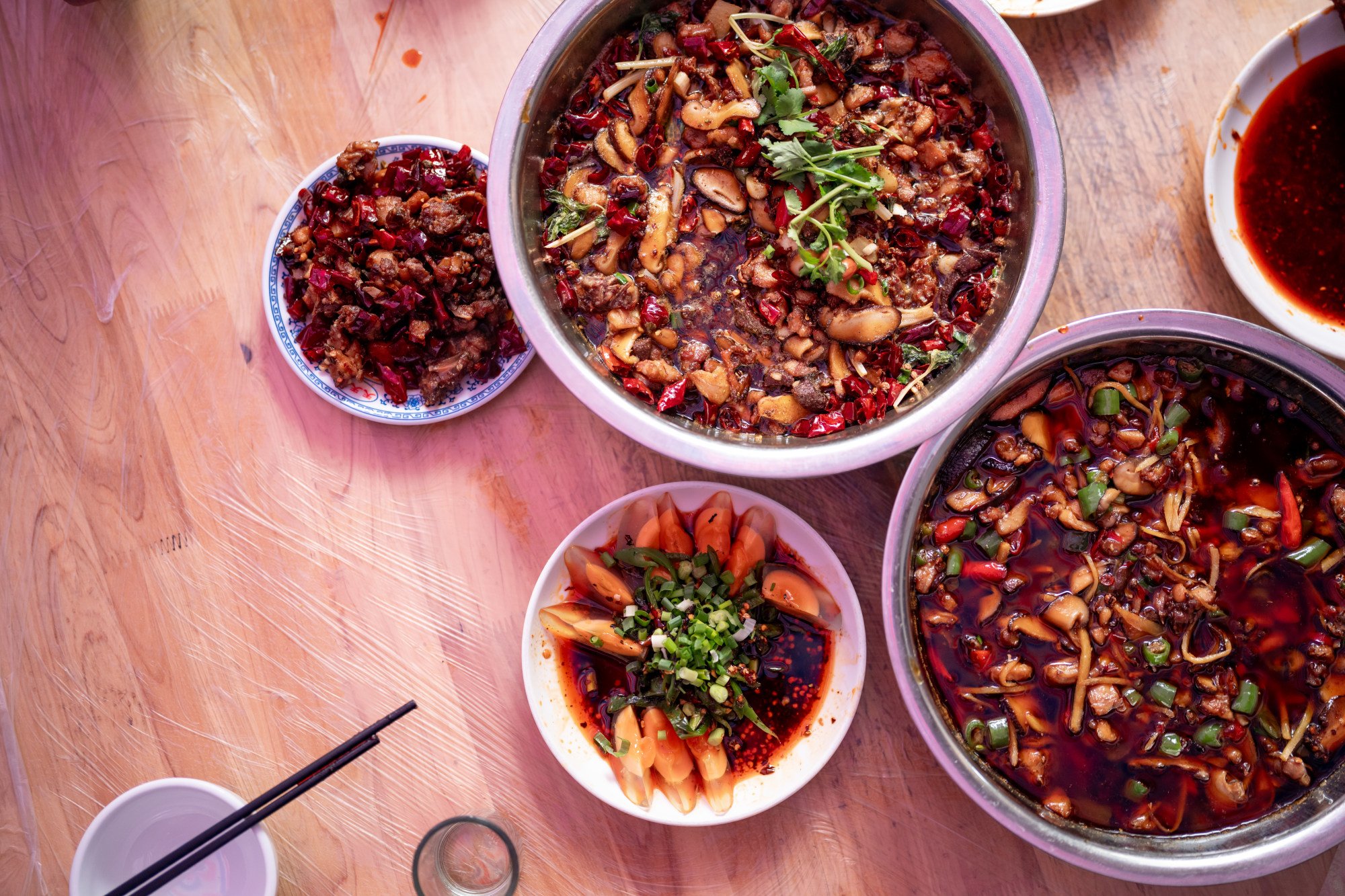
Defining any single component of this disorganized setup as a restaurant proves challenging, yet these scattered outdoor tables amidst organized pandemonium make it one of the most renowned dining spots in Zigong, located about two hours south. The capital city of Sichuan province is Chengdu. and renowned for a dinosaur museum Chilli heat and salt. Originally named "Shi Shen," which means Food God, the restaurant is commonly referred to as Toilet Rabbit by locals.
Are you curious about the most significant issues and global trends? Find out here. SCMP Knowledge Our latest platform features handpicked content including explainers, FAQs, analyses, and infographics, all provided by our esteemed team of experts.
For the public restroom located just past the tables, which has gained notoriety in its own regard (it’s best to keep quiet about the reasons behind this fame), use 'toilet.' For the numerous slender creatures the establishment consumes daily, refer to them as 'rabbits.'
The Toilet Rabbit's hallmark dish features finely chopped rabbit cooked alongside gently spiced chilies and locally sourced young ginger from the region, along with fresh greens. Sichuan peppercorns And a few twists of dried orange peel. This recipe is superb and has been replicated extensively throughout the city, leading many establishments to list the dish as Toilet Rabbit on their menus.

However, I did not visit Zigong for the rabbit (or the restroom), which gained popularity only in the late 1990s, according to local food historian and writer Chen Maojun. My purpose is to explore the region’s beef dishes, spicy flavors, and traces of its past as a thriving salt well center.
During the middle of the 19th century, Zigong embarked on an economic upsurge fueled primarily by the burgeoning salt sector. This region within Sichuan, which originally formed part of an ancient inland ocean, continued to harbor rich deposits of briny water and salty rocks buried far below its terrain. The area has seen salt mining activities for hundreds of years. , but when the Taiping rebellion (1850-1864) when access to salt supplies from the eastern seaboard's salt flats was severed, the region's inland wells abruptly became much more significant.
These wells helped produce some of the nation's wealthiest individuals, and this potential for riches attracted hundreds of thousands of workers from various parts of southern China who were seeking their own prosperity. The twin towns that formed Zigong—Ziliujing and Gongjing—emerged as the biggest industrial hub in China, as mentioned in a 2005 publication. The Merchants of Zigong by Madeleine Zelin, who is a professor of Chinese studies at New York's Columbia University.
It resembled the oil rush in the American West, characterized by massive 20-meter-high wooden derricks and a countryside intersected with bamboo pipes transporting salt instead. This phenomenon gave rise to a city brimming with newfound riches, featuring amenities like an opera house, a flourishing sex trade, and extravagant clubs for distant investors looking to strike it rich.
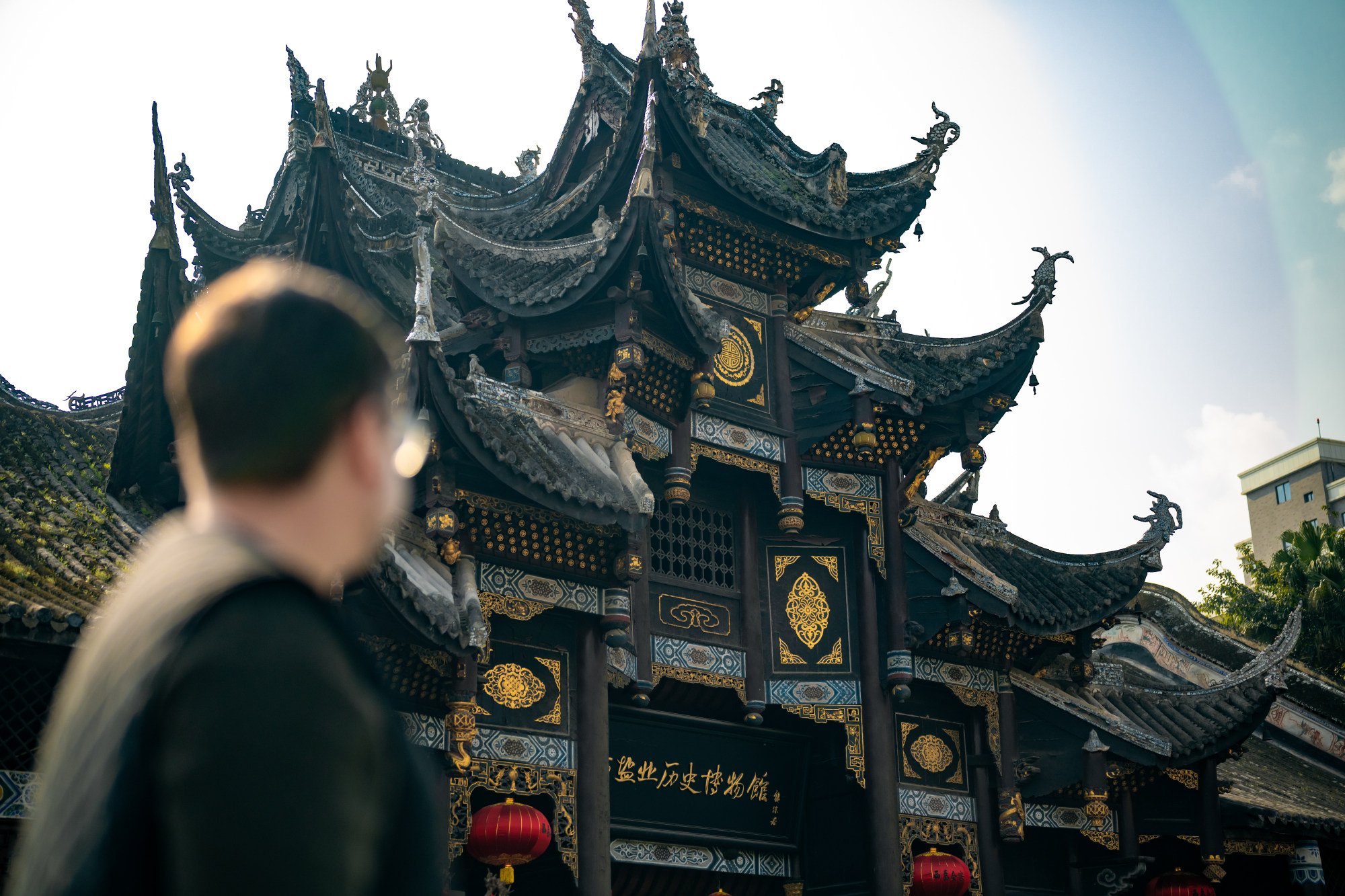
Business owners who had an innate sense of where to dig a well—despite this being an extremely costly and perilous endeavor—were celebrated as legends. Workers transformed into experts, mastering the skill of drilling wells over a mile deep without causing cave-ins or polluting the water source, a task that might require up to ten years until they struck saltwater—or perhaps never did at all.
Others labored over the scorching furnaces, heating the briny solution until it transformed into salt. Those who were most adept at their craft refined this salty liquid through multiple stages using diluted soy milk, resulting in an exquisite white 'salt flower.' Countless others were engaged in logistics, moving the processed salt from the hills down to vessels along the Tuo River, where these shipments would continue their journey onwards. Yangtze And from there, extending across the remainder of the nation. Merchants provided the city with wood, bamboo, water buffaloes, and everyday items. A privileged class managed the magnates' activities, serving as accountants, engineers, and overall administrators.
However, most of these laborers lacked skills and were heavily exploited for their manual work. They would endure strenuous shifts pedaling apparatus reminiscent of bicycles, which propelled the brine through pipelines from wells to furnaces around the clock, akin to an incessant spin class. Often, they worked without clothing just to stay cool.
Water buffaloes and draught cattle performed the most laborious tasks, powering the pump houses that drove the drilling equipment 1,000 meters underground to extract the brine. For many years, Zigong boasted the highest number of water buffalos in all of China, with populations reaching as high as 30,000 individuals. Each animal was considered so precious that they were individually marked, documented, and monitored.

Whole sectors developed around this activity. Specifically, within the buffalo trade, there were individuals acting as brokers for sales, merchants organizing transportation from various areas in southwestern China to Zigong, entrepreneurs leasing buffalos akin to renting industrial equipment, cultivators elsewhere in Sichuan growing broad beans to nourish them, numerous veterinary professionals lining the main streets of the city, and finally, slaughterhouses and butchers where these animals ultimately met their end once they could no longer work.
Their droppings were dried and utilized as fuel, their skins dispatched to nearby tanneries, tendons transformed into adhesive, and bones incorporated into crafts, such as the renowned lanterns of the city. (According to Zelin, the pools where these creatures bathed contaminated the water source, resulting in recurring yearly cases of cholera and dysentery.)
The turnover rate for water buffalos and cattle was rapid – at fifteen percent annually – with their meat frequently gracing dining tables. Priced at roughly one-third that of pork, beef, regardless of its questionable quality originating from ill or aged livestock, became the go-to meal for Zigong’s laborers.
I accompany Chef Tao Wanjun into his commercial kitchen early one morning at a privately-owned restaurant in central Zigong. The steel-lined area is tranquil since lunchtime isn’t for another few hours, providing ample room to move around—crucial when attempting to extract a cow’s head from an enormous stewing vat.
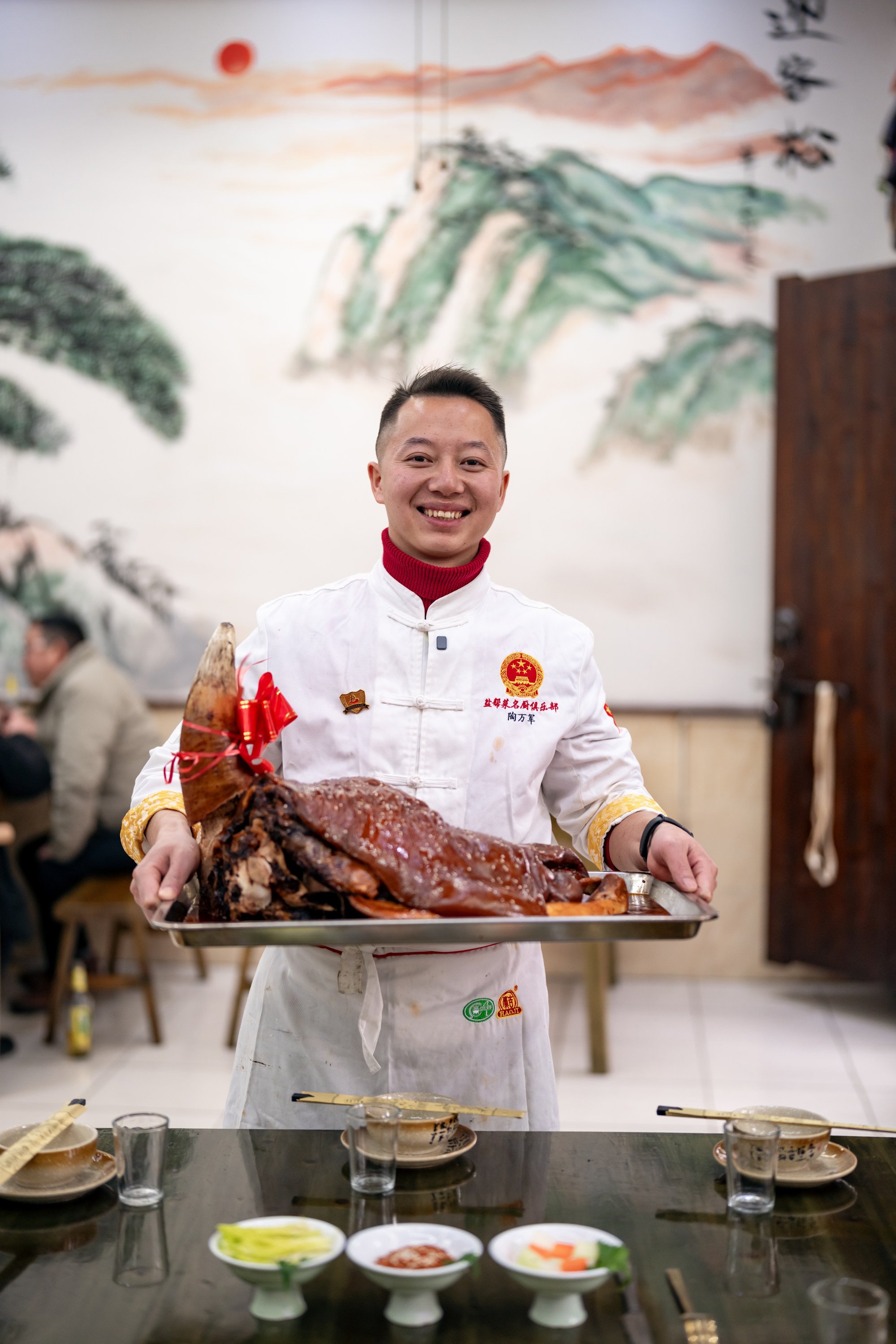
The day before, Tao had divided the 27kg head into two parts, simmered it through the night, and asked for my assistance to transfer it from the broth to a serving platter. The head is both heavy and cumbersome, with its horn protruding from the cheesecloth that maintains its form. No single utensil in the kitchen can handle this task gracefully, as Tao hasn’t performed it often. With effort, using a strainer and tongs, we succeed together.
The braised cow's scalp, referred to as niu tou fang It was an uncommon yet not unprecedented dish at a Zigong banquet. However, serving an entire head—something even Chen, the city’s 75-year-old food historian, had only encountered in writings—was quite rare.
A shared acquaintance had persuaded Tao to prepare the two-day recipe for our benefit; however, even he was winging it, relying on knowledge from books and skills acquired during visits to Xinjiang, where they have distinct ways of preparing cooked animal heads. This was only the second time Tao had attempted this dish in approximately six or seven years, and the vibrant, chili-infused glaze coating the final presentation is entirely his creation.
Tao and Chen disagree about whether an entire cow's head was considered a lavish feast for the upper class or simply a practical means of utilizing the whole animal. Regardless of its social status, it undoubtedly makes quite an impression.
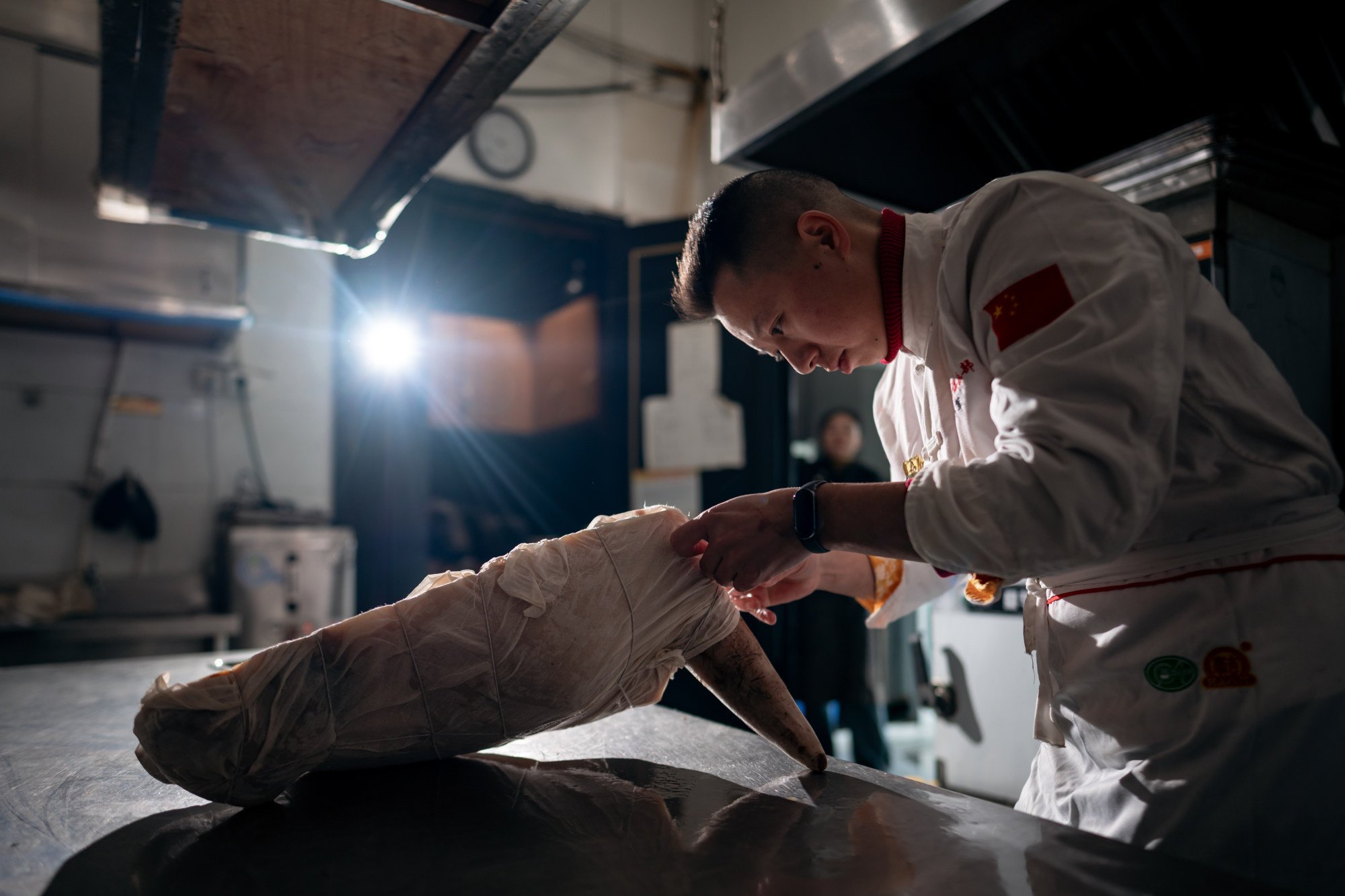
At the dinner table in the dining room, Tao passes me a knife so we can portion out the head for everyone. Since I've never done this before, I'm unsure about how to begin. As I carefully slice through the facial features, they gradually become apparent: the substantial piece of flesh in the cheek, which is succulent and disintegrates easily; the squishy and delicate jowls and gums; the firm nasal area. This brings to mind a fish head with its blend of textures—collagen, fat, and various consistencies. Eventually, Tao steps in and finishes by cutting away the scalp.
The robust hide is sturdy yet pliable, reminiscent of cured jellyfish, with a flavor profile combining spices and intense beef notes. Once our sizable party completes uncovering the plate, the pristine mandible along with its connected fangs comes into full view. The scene resembles an excavation site.
We didn't need to visit the dinosaur museum; lunch was ancient enough on its own.
Prior to the term "cuisine," cai xi When Chinese cuisine gained popularity, it was typical to refer to local culinary styles as "gangs." bang ). The people of Shanghai still refer to their cuisine as benbang cai ("Our Gang's Food"). In Hangzhou, it's " hangbang cai " ("Hangzhou gang food").
The most recent addition to this phrasing is Zigong's. yanbang cai The phrase "salt gang cuisine," which represents the culinary style of the city, gained prominence around the early 2000s, though there is debate over its origins.
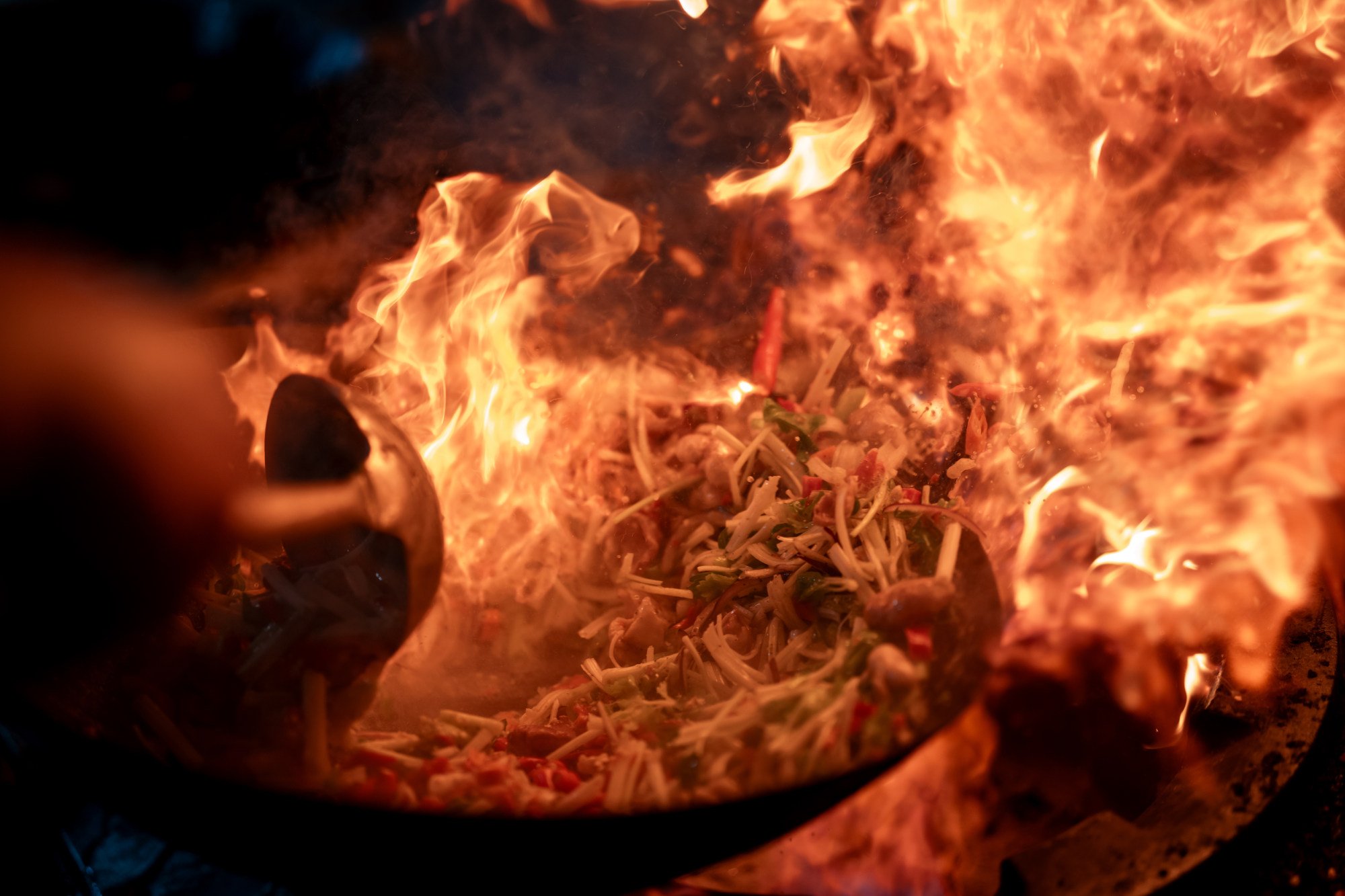
For the more skeptical, it’s primarily a marketing ploy devised by clever restaurateurs. Others, such as Chen—who released a book in 2010 entitled Zigong's Salt Gang Cuisine suggests that the blend of banquet dishes, working-class fare, private cooks, and considerable prosperity contributed to the development of a distinctive culinary tradition, separate from those found in other regions of Sichuan.
However, the boundaries might not always be clear-cut. Many traditional recipes that Chen painstakingly recorded have largely vanished over time. The challenge lies in merging this historical legacy with contemporary preferences. Consider “Toilet Rabbit,” which Chen tactfully categorizes as part of the "new salt gang cuisine."
At least one dish unquestionably belongs to Zigong's salt industry heritage and is a staple among salt workers: "boiled water beef." shuizhu niurou Originally resembling a type of hot pot, this worker’s meal consisted of thin slices of water buffalo or beef that were rapidly cooked in simmering water at the dining table before being seasoned with salt and dry chili powder. Over time, it has become one of the most emblematic dishes in Sichuan cuisine.
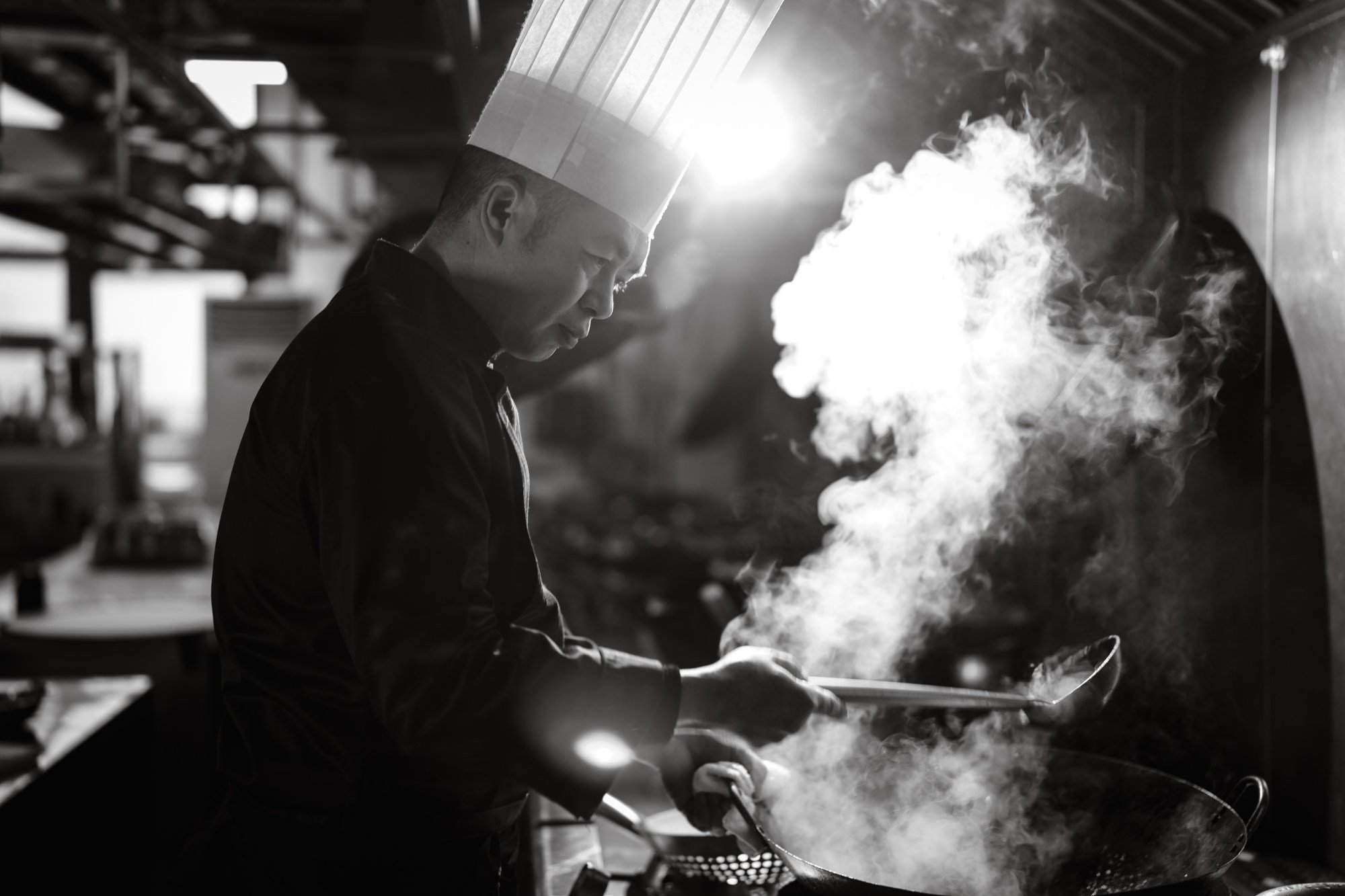
At the Longhu Impression restaurant, Chef He Wei allows me into his kitchen so I can observe him at work. First, he marinates thinly sliced beef tenderloin that has been briefly immersed in a stock infused with doubanjiang, a fermented broad bean and chili paste from Sichuan province. Meanwhile, he separately boils mung bean sprouts and stem lettuce until just cooked. These ingredients are then combined in one plate. To finish off this dish, he prepares a mixture of finely chopped garlic, crushed chilies, and Sichuan pepper; he pours searing hot oil over these components to release their fragrance.
Once he finishes, we head to a private dining area to converse. A dish is placed before us on the table, adorned with a salt sculpture crafted by Chef He using bamboo skewers and cooking string. This contemporary multi-step method for preparing boiled beef, developed by Chef Fan Ji'an in the latter part of the 20th century, stands far apart from what 19th-century laborers consumed—a significant upgrade from its humble beginnings as a simple and plain means to eat an old water buffalo. Nonetheless, it tastes excellent.
Similar to the double-cooked beef at Yan Wei Guan restaurant, which offers a Zigong twist on Sichuan’s renowned twice-cooked pork, and the steamed, glutinous-rice-covered beef found in rural Ox Buddha Town—a variation inspired by a traditional dish from Jiangxi introduced by merchants from that region—the culinary heritage of this city traces its roots back to the nineteenth century.
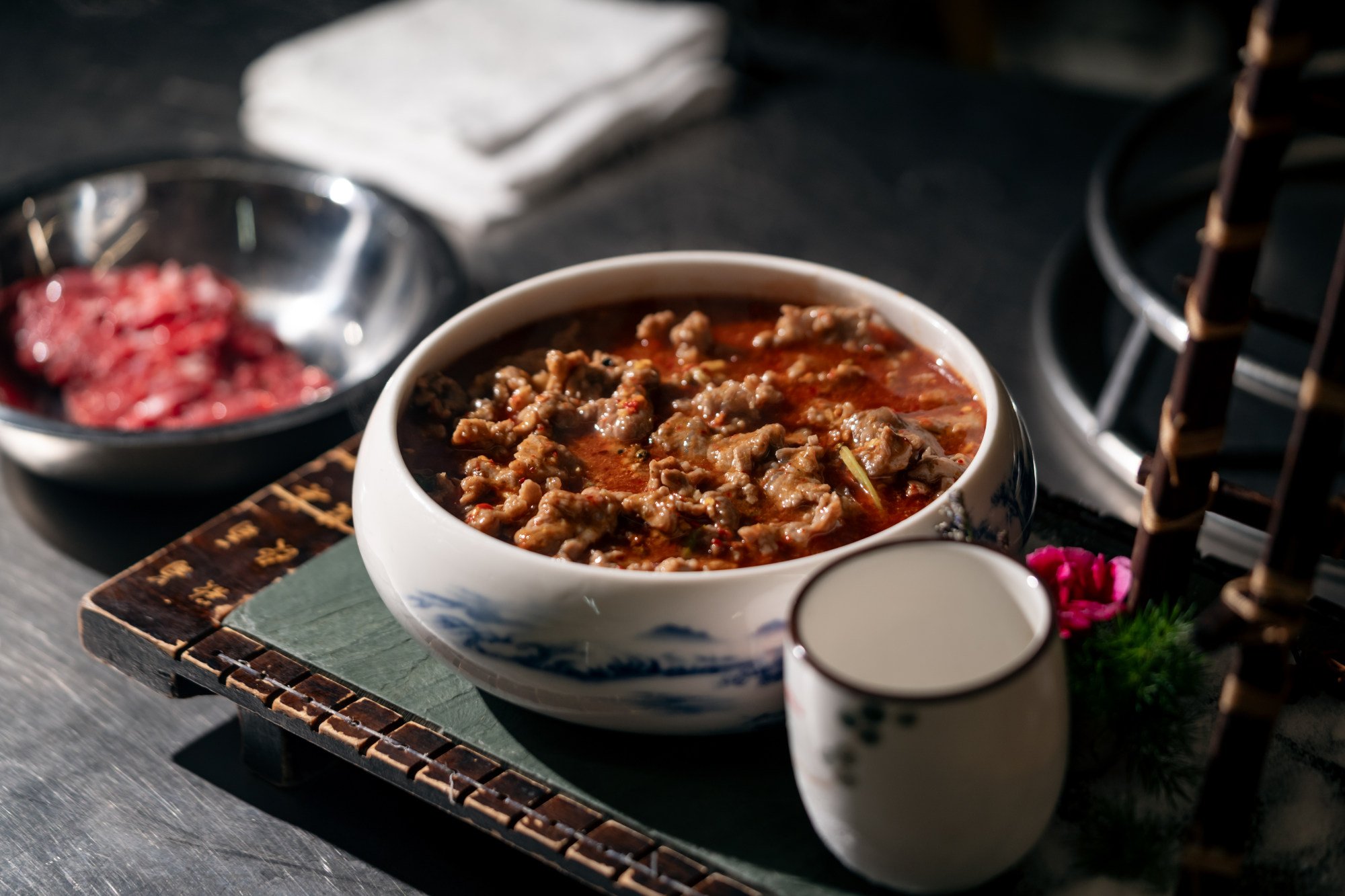
For devoted enthusiasts, Zigong’s salt-pertinent culinary traditions can be subdivided more precisely. The laborers' fare included items like simmered beef in boiling water, large pots of silky tofu traditionally curdled using well brine, along with dan dan noodles, which were created by an enterprising vendor on Zigong streets around 1880. Meanwhile, merchants and financiers hailing from China’s northern regions of Shanxi and Shaanxi clung to their native delicacies such as mutton, various bread preparations, and other regional specialties. Additionally, the upper echelon of salt merchants enjoyed a distinct array of gourmet offerings reflective of their elevated status.
At its peak, Zigong’s salt industry was controlled by four prominent families: the Wangs, Lis, Yans, and Hus. These families resided atop hills surrounding the town, constructing extensive family complexes and communal forts to shield themselves from marauders and frequent uprisings.
On my late-afternoon visit today, Lan Jian, a former soldier in his 70s who relocated to this region many years ago, greets me still clad in his quilted pajamas. He takes me through what remains of the once-prestigious Wang family compound, which now sits amidst an overgrown hillside filled with tombs, though only a few neighbors persist here.
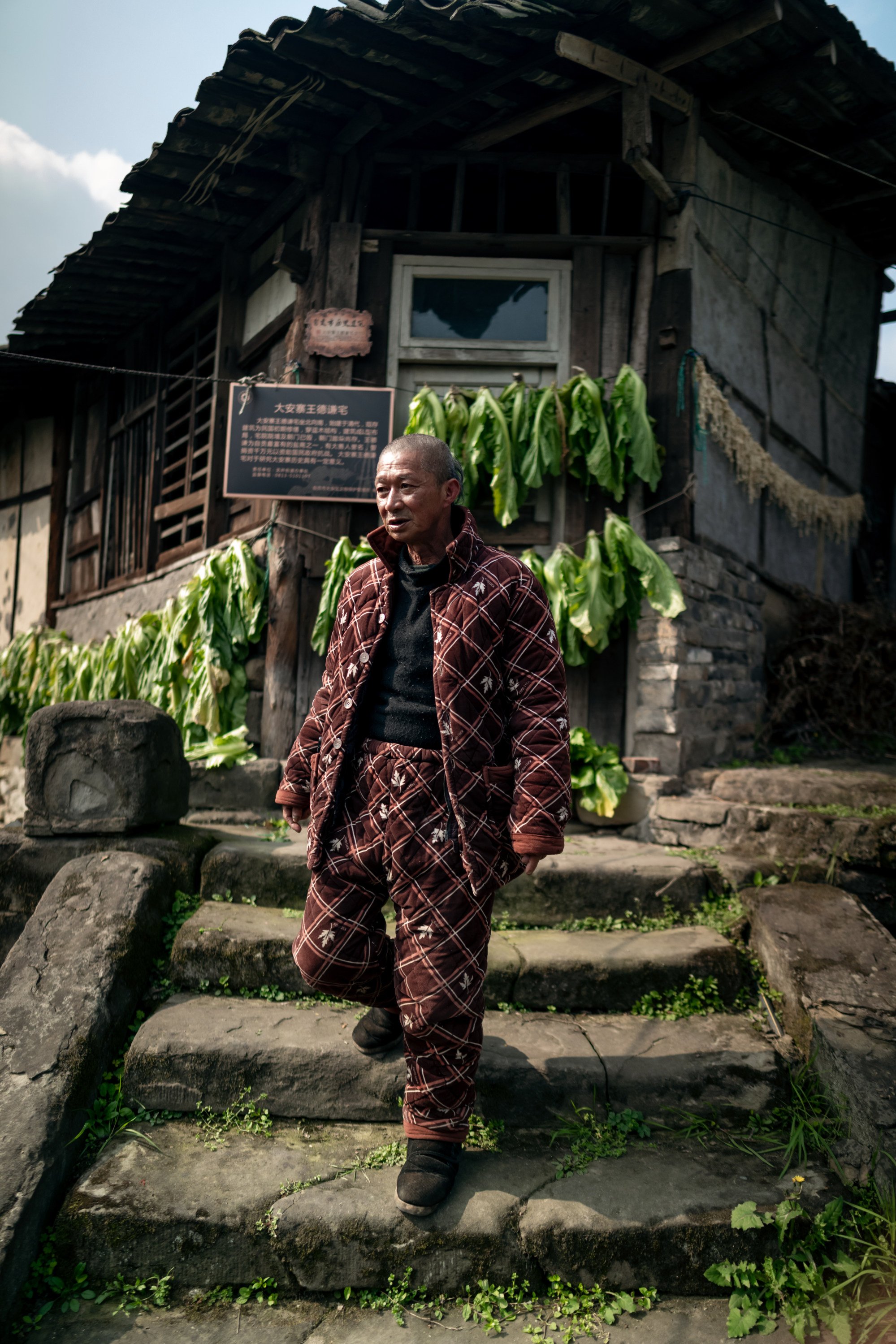
The once-abandoned residence of Wang Deqian, who served as the head of his family’s enterprise, now features strings of mustard greens hanging under the wintery sunlight. Along the pathways paved with stones, citrus trees thrive, their large yellow pomelos scattered across the ground. Despite the fact that all valuable items have been removed over time, Lan takes pride in highlighting the sturdy stone walls and the robust stone bases that uphold the massive wooden columns.
The final inhabitants in these buildings – such as Lan, who isn’t part of the family – relocated several years back, he informs me, and nature has begun to take over both the older and newer constructions. Not considered an attraction for tourists and absent from city maps, the sole guests are sporadic outsiders like myself, lured here by its past.
The Wang family dining hall is located in a recessed area within the complex, featuring a lengthy, flat-roofed structure topped with its initial dark-tiled covering. The cuisine that graced those tables has sparked extensive conjecture and scholarly investigation, beginning among laborers and subsequently engaging historians.
Legends tell of the extreme measures taken by the upper class to amuse themselves, ranging from the overly opulent to the outright barbaric acts.

In one telling, they favoured a type of hard-to-catch river fish whose quality began to deteriorate as soon as it left the water. Unable to be transported live, fishermen devised a method to cook the fish directly on the boat late at night, and then, through a series of couriers, deliver it by foot to diners dozens of miles away in time for lunch - still warm. A book I found names a Wang family manager said to be particularly corrupt, evidenced by his taste for expensive river fish.
In some cases, the rich were rumored to force geese to prance on flaming coals until their feet were burned (after which they would be plucked and served as food). Others claimed that before slaughtering pigs, they poured scalding water into their mouths to cause their blood to froth and clot.
Actually, such tales likely reveal more about the gap between social classes than they do about any real dining tables; the envisioned feasts merely bolstering the tycoons’ harsh images.
What holds true and may be self-evident is that the affluent consumed food differently compared to the working class. In 1916, Qiao Fu, who documented life in the city, noted this observation. in a guidebook there were no renowned chefs in Ziliujing (formerly the hub of the two counties that were eventually combined to form Zigong).
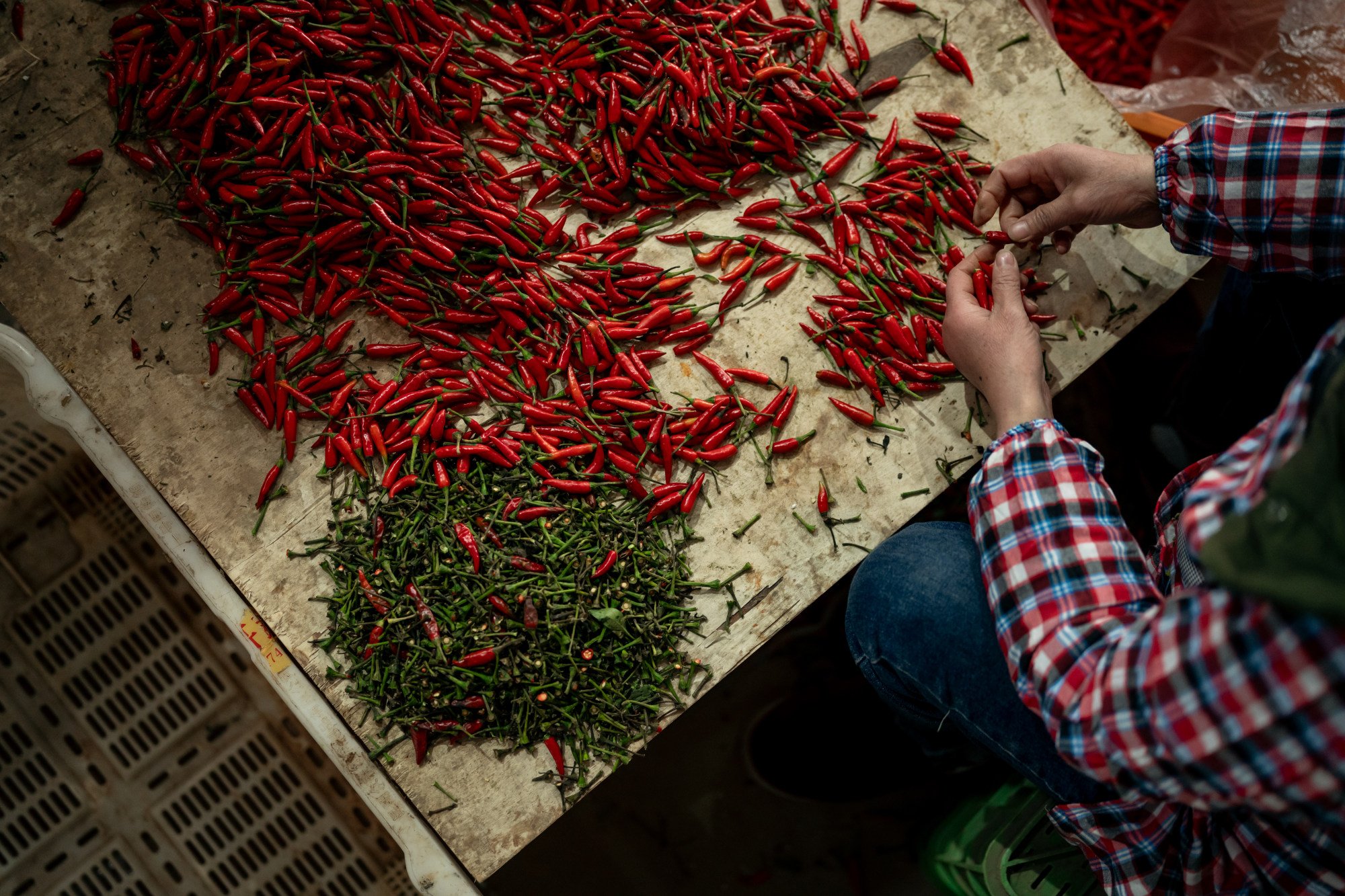
Moreover, there might not have been numerous high-end eateries initially—most places were designed to serve the working class rather than catering to gourmet experiences. (The city’s economic diversity is reflected in how Qiáo's chapter on Zigung’s brothels matches the length of his coverage on cuisine, and although he failed to locate a chef, he provides extensive profiles of some of the town’s renowned madams instead.)
However, Qiao overlooked the fact that the rich dined privately; the best cuisine in Zigong originated from its corps of skilled and highly compensated personal cooks. As Chen explained, these culinary experts even formed their own guild and organized contests amongst themselves, yet they did not operate public eateries.
Rather than doing otherwise, they organized extravagant feasts where they set challenges to utilize all parts of the cow. Alternatively, they would engage nearby farmers to rear lambs specifically for a full-course feast celebrating the winter solstice.
The Li clan’s culinary team – with some prominent households employing as many as 30 cooks – provided the “immense delight,” a hearty stew featuring cured ingredients such as chicken, duck, goose, pork, beef, lamb, pigeon, rabbit, and fish. The Zhang lineage boasted an assembly of 25 chefs under the guidance of Master Banquet Chef Ye Zhangpan, renowned for his exquisite bear paws and softshell turtle delicacies. Meanwhile, the Hu family specialized in hand-tossed noodles along with succulent roasted meats. In contrast, the Tian household distinguished themselves through grand banquets centered around luxurious items like abalone, sea cucumbers, and birds' nests.
Today, Zigong enjoys a reputation within Sichuan for being the spiciest city in the region. The reason behind this claim may seem straightforward at first glance, yet it leads to complex explanations. In truth, nobody truly understands why this is so—not only concerning Zigong but also regarding areas elsewhere around the globe where food tends to be exceptionally spicy. Various hypotheses have been proposed, however.
In China, the climate hypothesis stands out as the prevalent theory, suggesting that spicy heat counteracts the impact of chilly, humid conditions on one’s physique—a concept particularly apt for the mountainous regions of southwest China and the frigid northeastern parts. However, this raises questions about why scorching dishes prevail in arid places like Mexico and India. Similarly, how does one explain the milder fare found in the cold, wet climates of Northern Europe?
There is the geographical hypothesis ( Sichuan embraced its preference for spicy flavors. From Hunan and Guangxi provinces; this claim may be plausible but could potentially be historically imprecise) as well as the technique theory (individuals utilized the most readily available seasoning, and chilies were easy to cultivate).
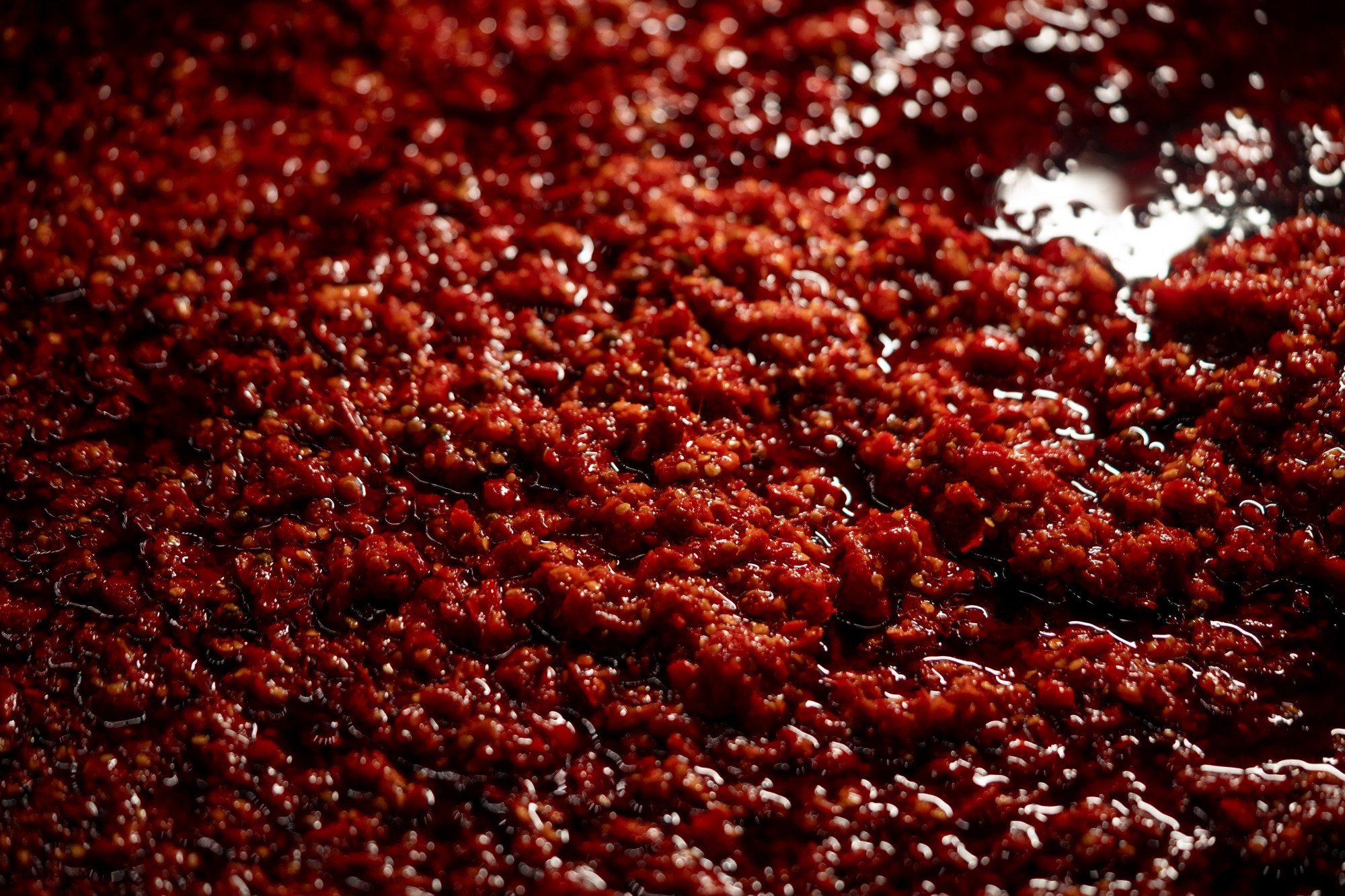
In a 2018 study, researchers from China and the U.S. analyzed data from the China Health and Nutrition Survey to suggest that income level played a crucial role; specifically, those with lower salaries exhibited higher thresholds for this particular measure. spicy foods .
The theory I favor posits a straightforward societal perspective: it was considered macho. Consuming extremely spicy cuisine was seen as a sign of masculinity, which particularly resonated in the rapidly developing city of Zigong with its predominantly male population. Resilient individuals demonstrated their toughness through enduring such intense fare, using this distinction to set themselves apart from those outside their community.
Zigong's detractors jestingly say that the city has two styles of cuisine: chillies paired with ginger, and ginger combined with chillies. In truth, the use of tiny red chili peppers, referred to as xiao mi la , and a kind of ginger so young and delicate that its skin is nearly transparent, defines the contemporary flavor of Zigong.
One morning at the wholesale produce market, I walk through an entire aisle dedicated to these two items. Chef Wang Bin, who hails from Zigong and has gained millions of followers online, elucidates the subtleties of each ingredient.
At the marketplace, heaps of ginger arrive in various hues, ranging from a rich gold similar to turmeric to those with stems blushed with pink. Although production of young ginger surged in the late '90s due to farmers extending the growth period using heated pipes buried in the earth, current demand has driven prices above that of meat.
During its prime season, close to Chinese New Year, fresh ginger can fetch as much as 160 yuan (approximately HK$170) per kilogram. In Zigong, pork tends to be priced at roughly 25 yuan per kilogram. Due to the high costs, particularly because of the substantial amounts utilized by local cooks, many eateries have opted instead for the less expensive and coarser “second yellow” variety of ginger.

Further along the path, I delve into a bulk bag of Heavenly Sword peppers, which Wang informs me have superior flavor compared to their spiciness. He mentions that just one of his eateries—a small establishment seating around 100 patrons—consumes approximately 100 kilograms of these peppers daily.
As I partially tune into the growing discomfort, my gaze drifts over to the opposite side where clusters of women are seated at tables, engaged in sorting and categorizing tasks. xiao mi la The finest peppers, as per Wang, are firm to the touch, compact yet teeming with seeds. A heap of discarded chili peppers gathers on the floor.
At a point when I wish to erase from memory, a duck strolls over and starts feasting on the leftover chili peppers scattered across the ground. My lips feel like they're engulfed in flames, and tears stream down my face. After finishing its feast, the duck ambles off, leaving behind just a lively flick of its tail feathers as evidence of its victory. A mere bird has brought me low. (To defend myself, I found out afterward with satisfaction that mammals are most sensitive to capsaicin—the compound responsible for chilies' fiery kick—making them more susceptible to such discomfort than birds.)

Nevertheless, Zigong's fame for being incredibly spicy might just be bluster rather than substance.
Except for its unsympathetic poultry dishes and one meal at Qiu Jin, an establishment linked with salt smuggling known for its fiery spices which momentarily numbed my ears, Zigong’s typical heat level is quite tolerable. The cow head dish, the toilet rabbit, and the water-boiled beef—all appear intimidating but are actually more approachable than expected.
It’s also worth noting that Gong San, known for serving food so spicy it could be considered unpalatably hot, was closed during my visit as they were observing their yearly break. However, this exception doesn’t represent the usual scenario; nowadays, pushing customers to endure extreme spiciness appears less like tradition and more like a deliberate marketing strategy.
On my last morning in Zigong, I spend thirty minutes driving outside the city to visit a place that continues to produce salt just as it did back in 1890. Known as the Dongyuan Well, this attraction receives criticism from travelers online who view it primarily as a poor tourist spot. This happens mainly due to its lack of facilities designed specifically for tourists, despite being accessible to the general public.

That honor belongs to the more upscale Shenhai Well, which stands out as a central landmark known for its exceptional restoration and conservation efforts. Thousands of visitors come here every year to catch a view of the area’s salt-making past, capture images of the impressively illuminated boiler room, and purchase 38-yuan boxes of their salt at the souvenir store. In contrast, Dongyuan usually sees minimal activity with just one caretaker present along with several large security dogs guarding the premises most days.
A distinctive characteristic of Zigong's geology is the presence of both brine and natural gas. Once engineers mastered the techniques for efficiently separating and utilizing this gas around the 1880s or 1890s, it led to a significant overhaul of the local industries.
Previously, the furnaces used coal as their fuel source, resulting in a less pristine “crusty” salt tainted by soot, much like the burned residue found at the bottom of an overly cooked pot. However, when natural gas was introduced, it offered consistent and cleaner heating without the environmental drawbacks associated with coal-fired systems. This shift led to the production of superior, purer “fleur de sel,” or flower salt, which became highly sought after.
In recent times, Dongyuan's salt ponds are activated sporadically solely when stock levels in storage facilities start running low; however, the 167-year-old well continues to yield natural gas that needs to be released every day.

Coincidentally, the well’s manager is scheduled to visit on the same day as I am. While researchers from the national relics bureau are en route from Beijing to examine the site for potential conservation efforts, he has a brief window of free time before their arrival. He takes me around the open-air furnace structure and provides an extensive explanation about its historical background and operational methods.
Once he finishes his task, he retrieves a plastic sack from an inconspicuous drum positioned beside the cooking vessels. This represents a full day’s labor—around 30 kilograms to 40 kilograms of pristine, snowy-white “salted soy milk,” featuring the kind of large crystals cherished by culinary experts. After spending seven days tracing the echoes of Zigong’s salt legacy through its cuisine, it feels appropriate and long-awaited that I’ve ultimately uncovered the mineral at the heart of this heritage.
Progress in drilling and extraction techniques, along with the emergence of mechanized pumping systems, transformed the commercial landscape following the collapse of the Qing dynasty in 1911, marked by widespread militaristic control and conflict. Despite experiencing a fleeting resurgence during the 1930s when global hostilities interrupted eastern coastal salt production—making Zigong’s interior salt supply temporarily significant—the city failed to recapture its former splendor.
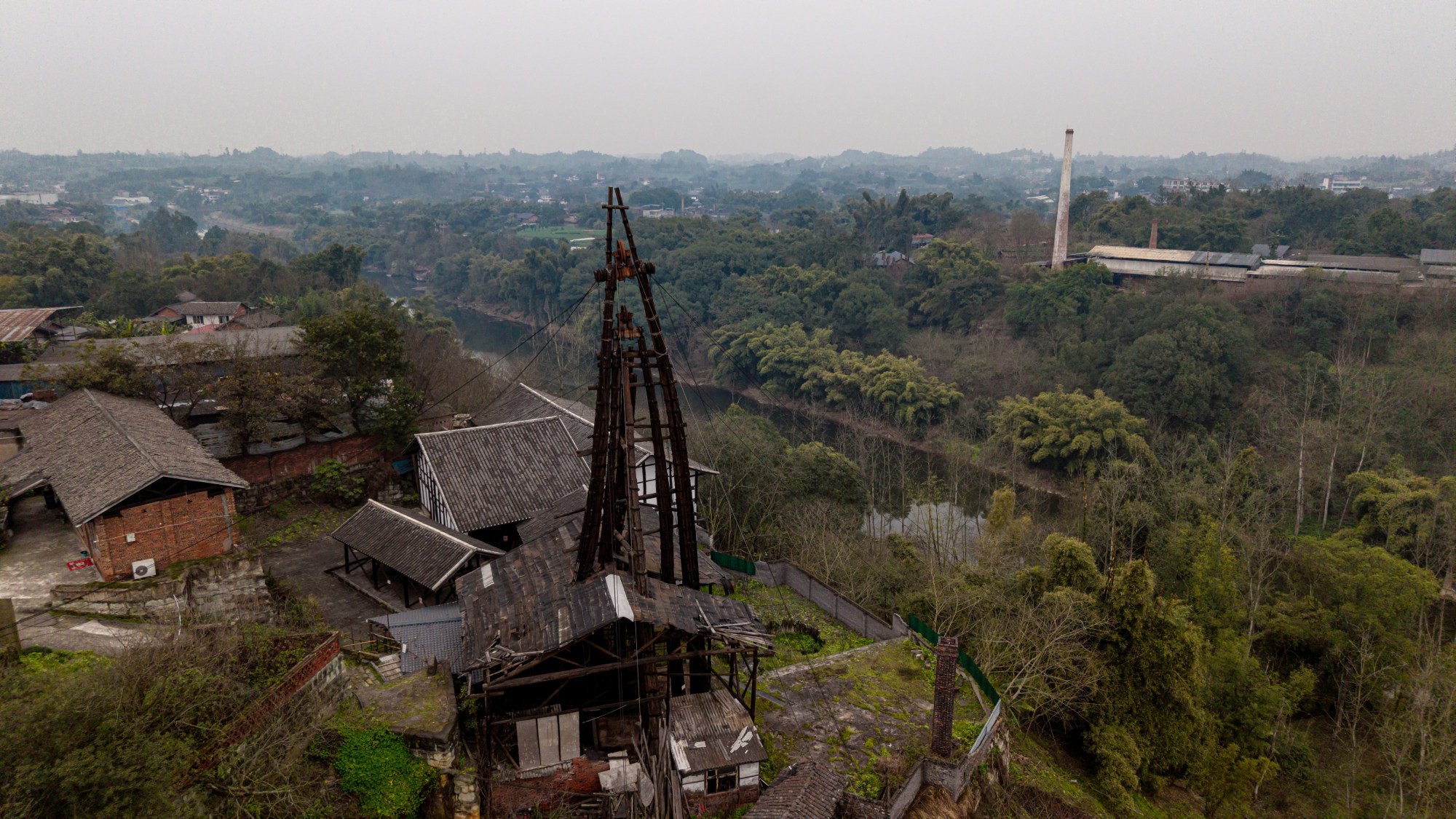
By 1956, as the salt industry faced a significant downturn and the pumps became mechanized, all of Zigong's leftover water buffaloes were either killed off or sold away.
The Ox King temple in the city, originally devoted to an agricultural Buddhist deity with origins in ancient India, was rededicated and restructured.
The five big buffalo statues constructed in the 1970s still stand, though they now find themselves situated along an unpaved path beyond the temple’s boundaries.
The beef-centric culture of Zigong has been replaced by a fascination with rabbits and what is known as "new salt gang cuisine." Similar to how the Wang family residences and the Dongyuan Well have become remnants of history, much of the city’s traditional salt industry heritage has nearly vanished from view.
However, if you know where to search and where to dine, you can still uncover remnants.
More Articles from SCMP
Trump’s proposal for tariffs on vessels from China isn’t going to rescue U.S. shipbuilding facilities.
Who is Min Woo Lee, the emerging golf sensation who found himself chatting with Justin Bieber on FaceTime? Transitioning from Generation Z humor to being dubbed the sport’s first cult icon of the TikTok age... And what does his "let him cook" phrase signify?
2 people were hurt when a truck slid down an incline and collided with a vehicle in Hong Kong.
China showcases its military might with an uncommon, extensive missile drill in the Gobi Desert.
The article initially appeared on the South China Morning Post (www.scmp.com), which serves as the premier source for news coverage of China and Asia.
Copyright © 2025. South China Morning Post Publishers Ltd. All rights reserved.

0 Komentar